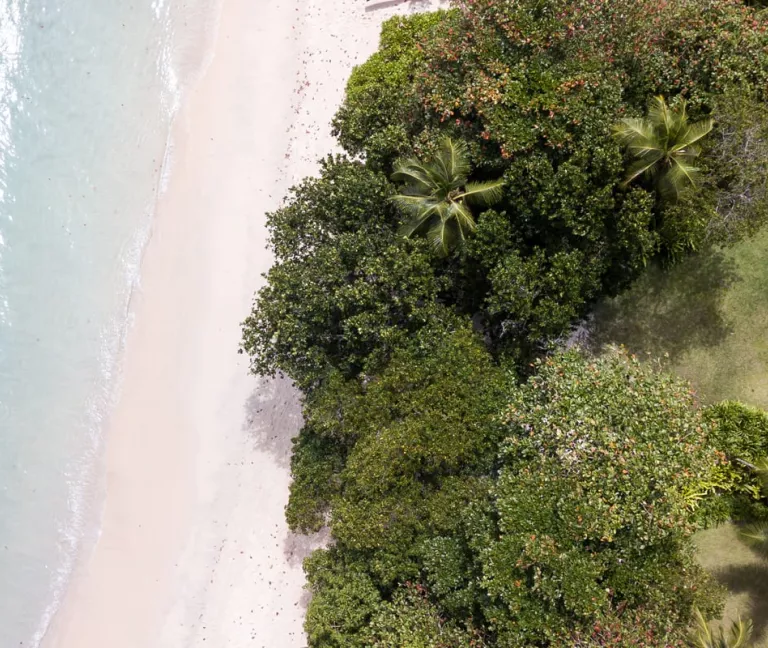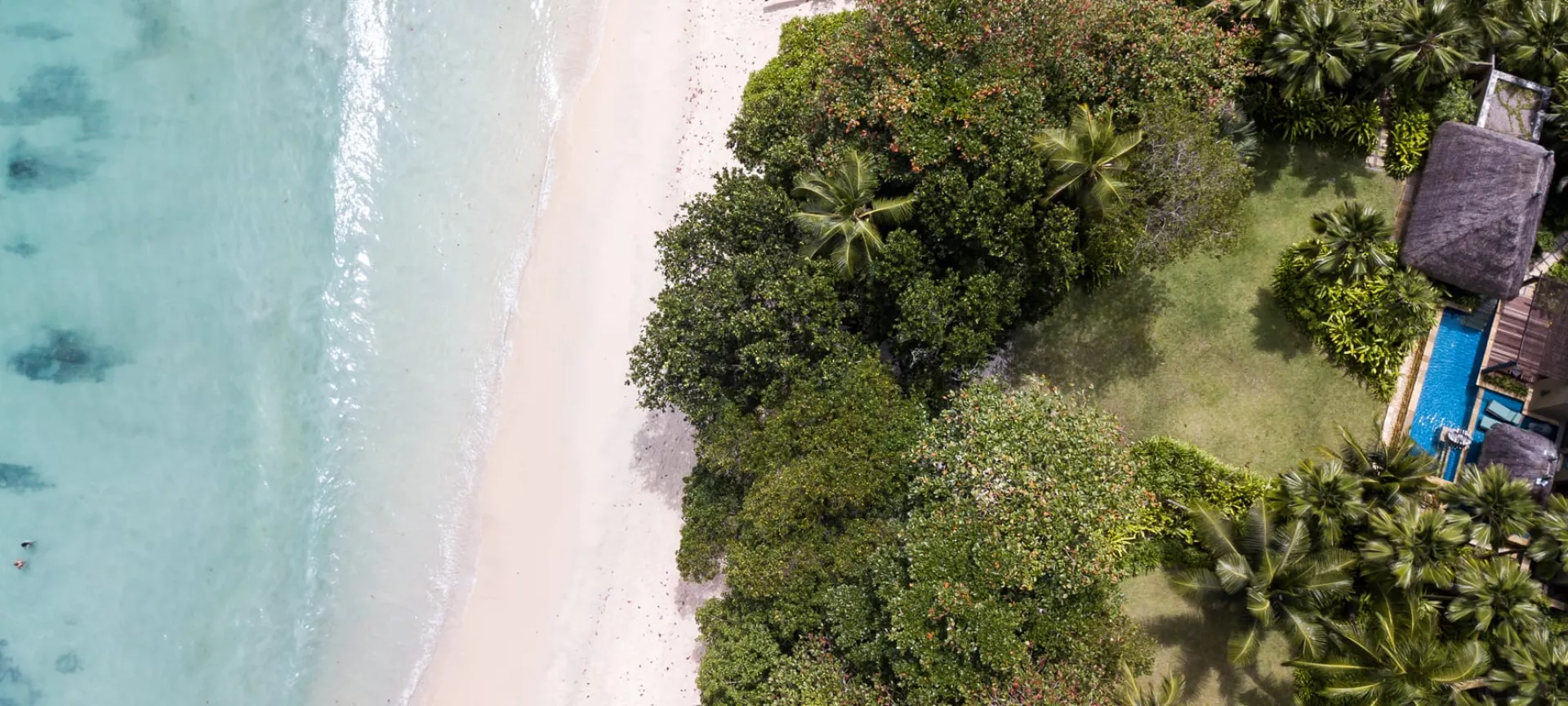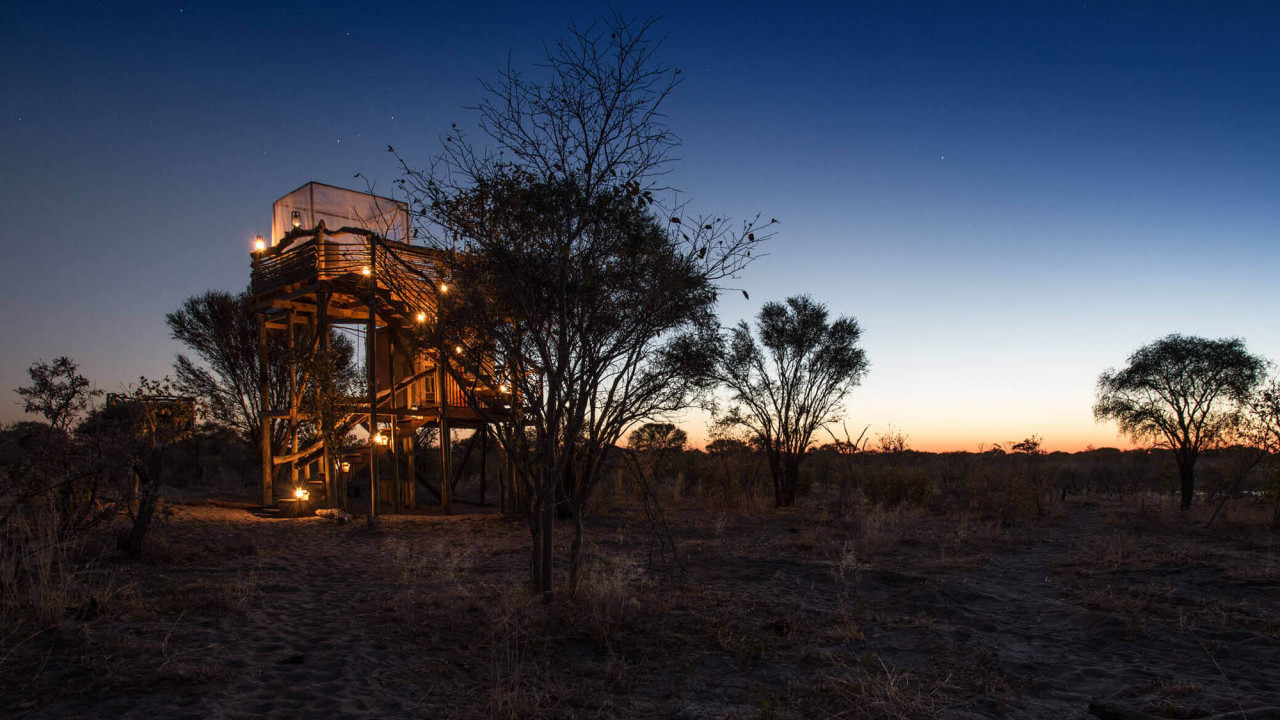
Take your experience to another level of adventure with a sleep-out in a remote spot with nothing but the stars above you.
A night in the wilderness, beneath a starry sky will be a memory that stays with you forever. Sleep-outs take various forms, which we'll run you through below, ranging from lap of luxury treehouses to the most basic mattress on the floor of a dry riverbed.
Whatever the setup, the general rule with most sleep-outs is that it works as an add-on to where you are staying. You will keep your room back at the main camp, only taking with you a small bag of overnight necessities and after an afternoon safari you'll pull up at the sleep-out location. Together with your guide, cook dinner over the fire before settling down for the night - always with your guide close by for safety. Some setups take you back to camp for dinner, heading out only once darkness has fallen.
Sit back and enjoy a drink by the fire as your guide talks you through the details of the stars dancing above you. As you retire for the night, the sounds of the bush will be your lullaby, but we can't promise an uninterrupted night's sleep as the owls hoot, the lions call and the frogs and crickets chatter away.
You'll wake with the sun and either head out into the bush for breakfast or return to camp to freshen up and start another day of safari.
1. Sleep-Out Decks
A sleep-out, or star deck is generally found in an area where wildlife is most prolific. So, for safety, it's a raised wooden structure, with the sleeping platform and a basic bathroom at the top. A full sized bed or mattress will be set up, shrouded with a mosquito net and the atmosphere set by twinkling lanterns.
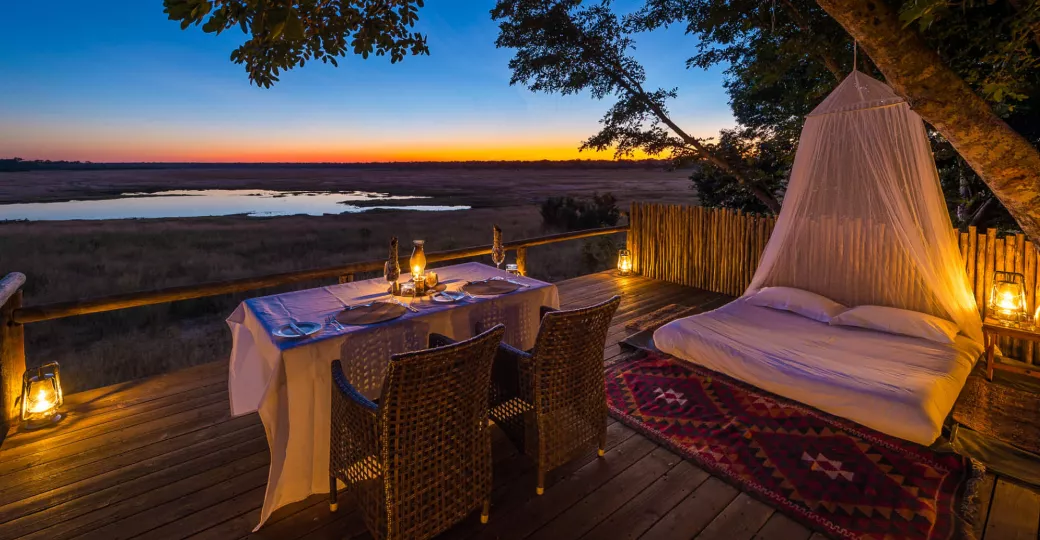
A star bed in Hwange National Park, Zimbabwe
2. Fly Camping
The term "fly camp" comes from the idea that the camp can be easily set up and taken down, allowing guests to move from one location to another quickly and easily. The camp is more basic than a sleep-out deck, usually made up of lightweight tents, basic cooking facilities, and a few essential amenities like a loo and washing area.
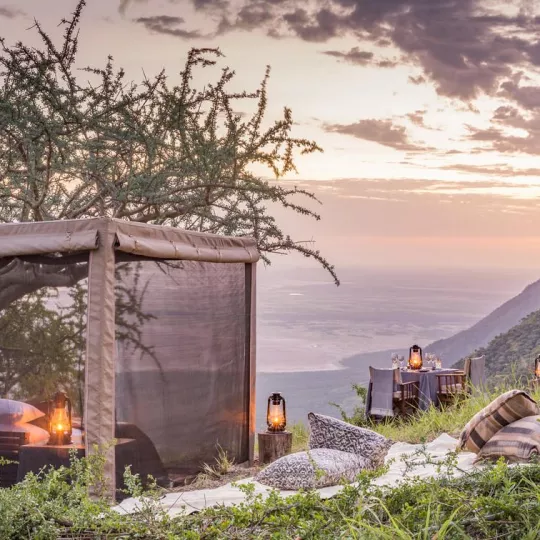
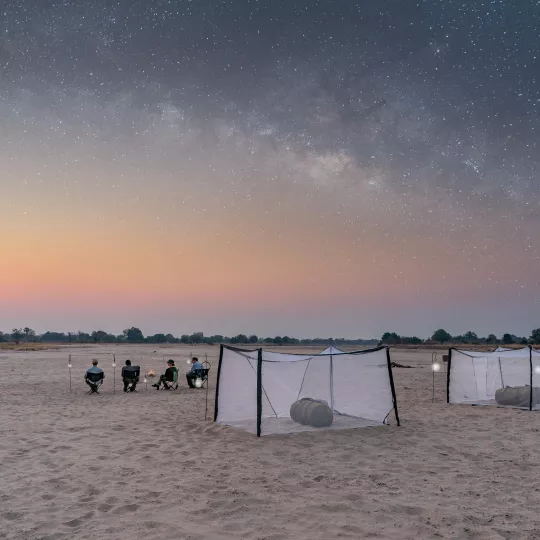
Fly camping in the Serengeti, Tanzania / Riverbed camping, Zambia
Fly camps come in a variety of shapes and sizes, from quite fancy pop ups like the above left to a very simple cube of mosquito net and nothing else (right). Although this is considered adventurous and a great way to experience nature, it does not mean that comfort is compromised.
3. Walking Trails
For the slightly more hardy adventurer, a multi-day walk is the best way to get deeper into the untouched wilderness. These are usually standalone experiences, and are as basic as it gets with just a bedroll laid out on the ground. You can expect a long drop loo and a basin with warm water for washing. Hence we'd recommend this for a maximum of two nights, and not during the hottest months.

Basic equipment only on the Tok Tokkie Trails, Namibia
It should be noted that this kind of sleep-out is not conducted in areas where dangerous wildlife roams, just the little critters so its perhaps not for those completely averse to creepy crawlies.
Read more about some of our favourite sleep-out destinations.
4. Roll-Out Beds
Some camps and lodges have a half-way house when it comes to a sleep-out experience. You'll remain at the camp, in your same tent or room but simply wheel your bed outside. Occasionally this will be an extension to your tent so you are still shrouded within the same unit, other times your bed will be setup with a mosquito net surrounding it and everything else left inside the main tent.
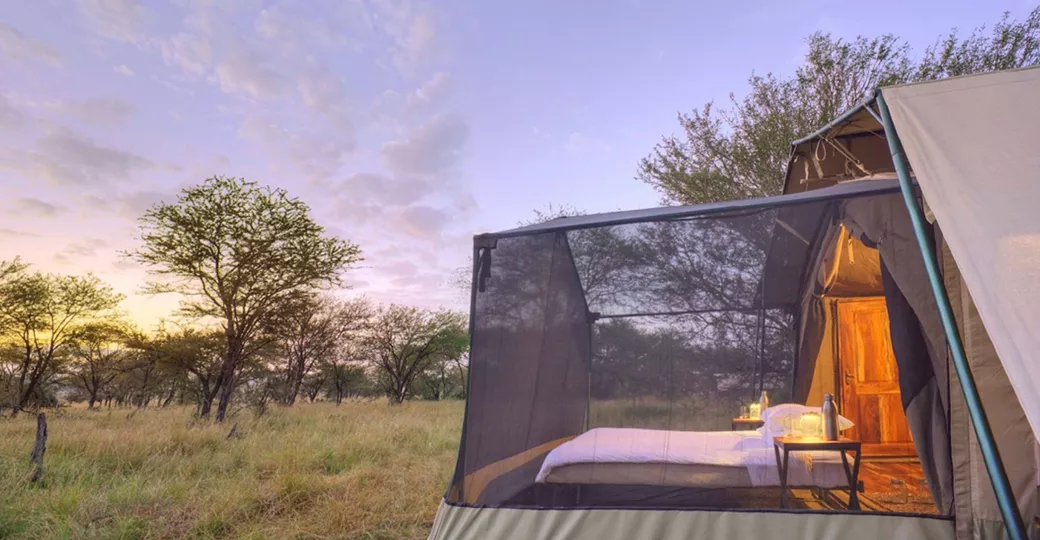
Star gazing extension at Olakira Camp, Tanzania
In our opinion, a sleep-out should be taken up whenever it's available. It enhances what is already an incredible experience and makes for a great story when you get home!
Our top tip is to download an astronomy app onto your phone before you travel, there is so much to learn and there's a reason a lot of Africa is a designated dark sky area...
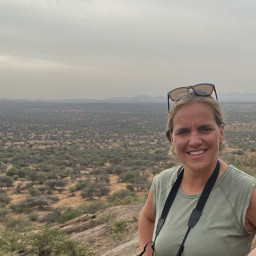
Vanessa Beldam
Ness first landed in Africa in 2008, when on a whim she accepted a job working in a safari camp in Zambia’s South Luangwa National Park. Little did she know how deep an effect this would have on he...
View profileNever miss a notebook entry with our newsletter

